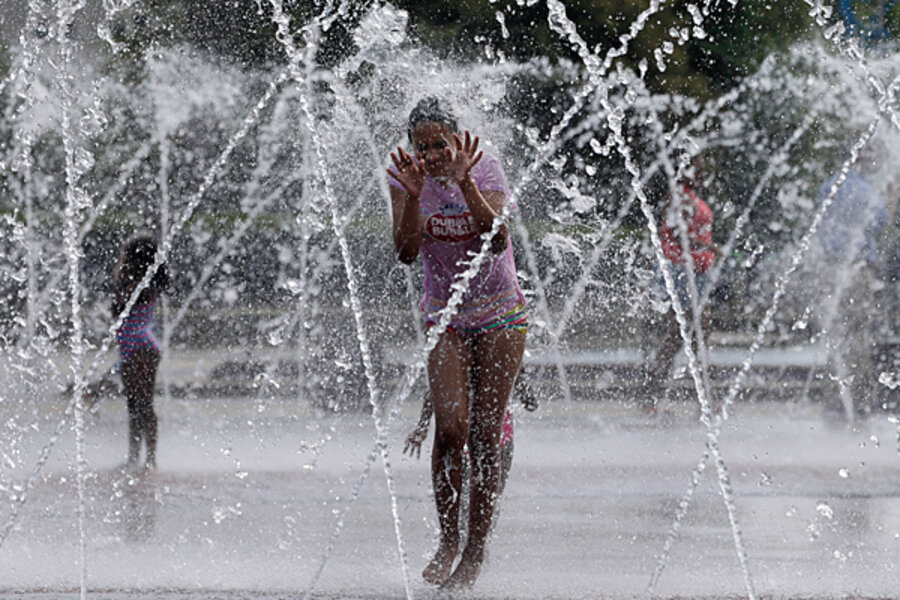Stifling heat wave settles over northeast quarter of US. Not cool.
Loading...
| Chicago
A heat wave is expected to bake the northeast quadrant of the nation this week, extending from the seaboard as far west as Michigan. Temperatures in the 90s are already posted in New York City and as far west as Detroit, and they are expected to remain there throughout the week.
Monday’s forecast high in New York City is 97 degrees, the highest on record since July 18 last year. Tuesday’s forecast high is 98 degrees. Nightly lows for the city are forecast to drop only into the low 80s.
The National Weather Service (NWS) says extreme heat is expected in the coming days mainly from the Mid-Atlantic to New England and that average temperatures will remain in the mid- to upper-90s. The agency issued a heat advisory through midnight Tuesday for the western suburbs of Boston and southern New Hampshire in the north, down through Rhode Island and most of Connecticut except the shoreline areas, New York City, central New Jersey, and southern Pennsylvania.
The culprit, say meteorologists, is a jet stream in Canada that is causing what they call a “blocking pattern” in the atmosphere, causing extreme high or low pressure systems that can last weeks. Angela Fritz, an atmospheric scientist with the Weather Underground, a commercial weather service based in San Francisco, says that the current heat wave is expected to last through Saturday.
“The real problem with heat waves is not that it gets as high during the day, but it doesn’t get as low at night, and that’s what causes so much stress on the body,” Ms. Fritz says. “Our bodies need that overnight low to recover from the day’s heat and if it doesn’t get that that, our bodies get stressed.”
High temperatures will reach the Midwest and portions of the northern plains Tuesday and Wednesday. Monday’s forecast high in Detroit is 90 degrees, the highest for the city so far this summer.
Communities where heat is intensifying the most are activating cooling centers and encouraging residents to stay indoors and hydrated.
Philadelphia Health Commissioner Donald Schwartz said Monday the city will have a special hotline open from noon to midnight Monday, and from 8:30 a.m. to 8 p.m. on Tuesday and Wednesday, which will alert residents, especially seniors, where they can seek shelter from the heat. In New York City, the office of emergency management announced that city cooling centers will open at senior centers, libraries, and community centers through Thursday.
The heat wave, expected to be the summer’s worst so far for several cities, arrives the same day that the National Oceanic and Atmosphere Administration (NOAA) released a report that shows June 2013 was the 15th warmest on record in the US, averaging 70.4 degrees, or 2 degrees above the 20th century average.
The agency reports that there were 1,300 record high temperatures on record in June and only 200 record lows.
The warmest region of the US in June was the Southwest – including parts of California, Nevada, Utah, Colorado, Arizona, and New Mexico.








